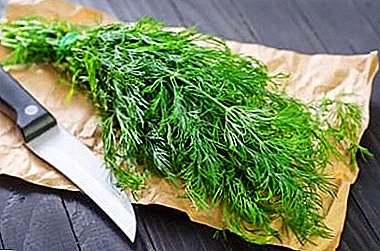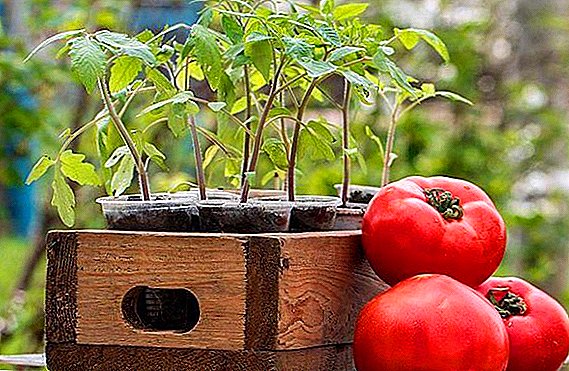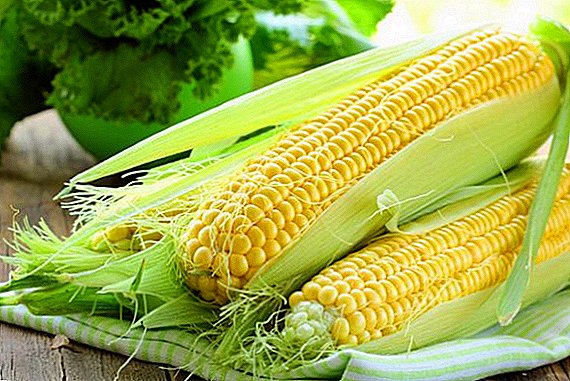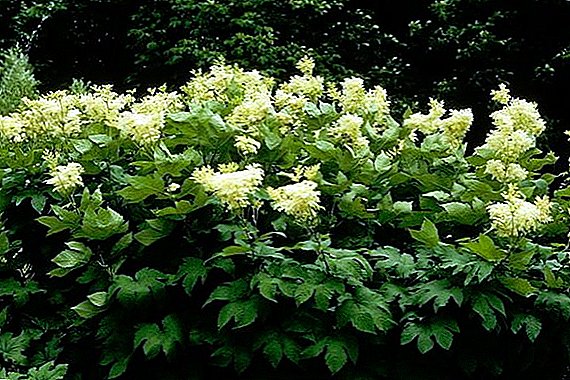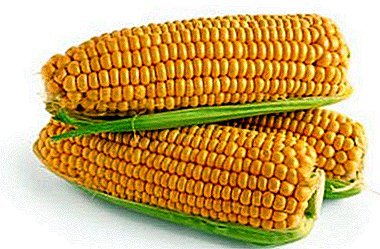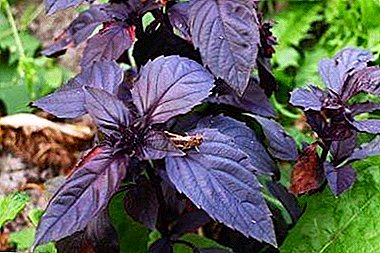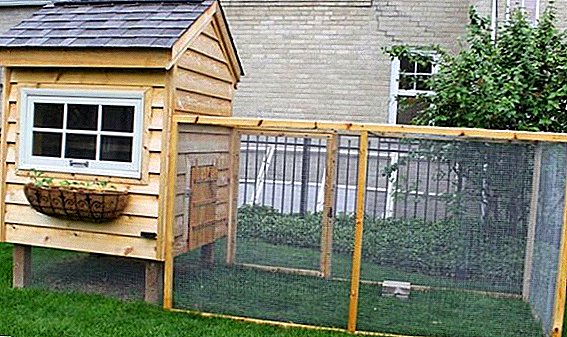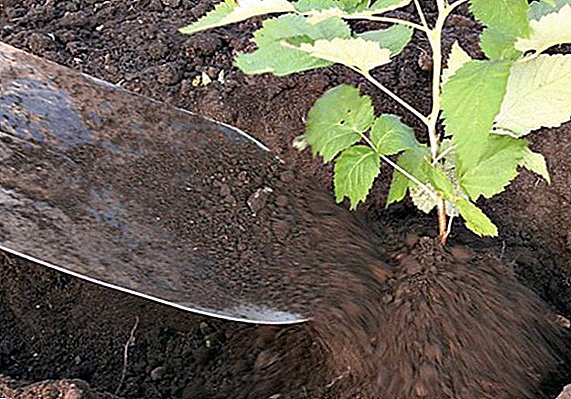 Raspberries - delicious, fragrant and incredibly healthy berries. About her lay poems and songs.
Raspberries - delicious, fragrant and incredibly healthy berries. About her lay poems and songs.
At the same time, the plant is absolutely unpretentious, and even a novice can grow a fruiting shrub.
Spring planting raspberries is considered the most effective and productive - let's look at why.
Spring terms
Let's see when to plant raspberries in the spring. It's all very simple, you need to choose the moment when the earth is already slightly warmed up, the average daily temperature is already above zero, and the buds have not yet blossomed. This is usually end of April - beginning of May.
The advantage of spring planting is that the soil is sufficiently wetted after the snow melts and spring rains. If the spring has stood out dry, it is worth postponing the planting until the fall, or be prepared for the fact that the plant will have to provide regular abundant watering.
Next, we consider how to plant raspberries in the spring, having studied step by step instructions, including the steps of selecting and preparing seedlings and the plot, as well as methods of planting. 
How to choose seedlings when buying
When choosing planting material, you need to pay attention to the root system: it must be strong and healthy in appearance. A good seedling should have 2-3 escape. At the base of the shoot should be at least three buds. The height of the seedlings does not matter.
It should be borne in mind that the root system of the shrub tolerates drought very poorly: if you do not intend to plant the plant immediately, put it in water, and during transportation, wrap it with a damp cloth or put it in a wet plastic bag.
If you want to plant in your garden not a simple raspberry, but an unusual one, pay attention to the yellow raspberry, the raspberry tree Tarusa, and the spring (variety "Tiberri").
Location selection
First of all it is necessary to take into account that raspberries are a perennial plant, and the place must be chosen not for one year. Shrub prefers sunny areas that are well protected from winds and drafts. It is not recommended to plant raspberries on hills and steep slopes, as this can lead to a lack of moisture.  Very often a place is allocated for raspberries. along the fence (preferably from the south) - in this case, the plant will be comfortable, and you will add a small protective element to your site. Perfectly suitable for planting raspberries also areas near the outbuildings - they will protect the bush from strong winds and frosts. The plant tolerates the neighborhood with fruit trees (except cherries).
Very often a place is allocated for raspberries. along the fence (preferably from the south) - in this case, the plant will be comfortable, and you will add a small protective element to your site. Perfectly suitable for planting raspberries also areas near the outbuildings - they will protect the bush from strong winds and frosts. The plant tolerates the neighborhood with fruit trees (except cherries).
Did you know? Raspberries are not recommended to be planted next to cherries, even if the fruit tree is at a distance of 3-5 m, the shrub will be undersized and will bear bad fruit.
Preparatory work
Planting raspberries in spring in open ground requires advance preparation. The plant is unpretentious and will surely give a good harvest, if you follow all the rules.
Site preparation
If you want to plant raspberry seedlings in the spring, the site is best prepare from autumn. The soil must be loosened and fed with ash and humus. It will not be superfluous to take care that the raspberry jam does not grow and does not go beyond the area allocated for it.
To do this, the ground around the perimeter should be dug and fenced with boards or curb tape. Naturally, the soil must be rid of weeds.
We advise you to read about the black raspberry, its most famous variety "Cumberland" and useful properties.

Seedlings preparation
Preparation of seedlings lies in the fact that in no case should the root system be allowed to dry out - it is very sensitive to drought. Therefore, after the purchase should be constantly monitor this moment. Immediately before planting it is recommended to moisten the roots in water or ground solution from the planting mixture.
Important! Planted, as a rule, young annual shoots, which are cut after planting to a height of 40 cm.
Landing methods
Even if the soil for planting is prepared and fertilized in the fall, it should still be slightly loosened before planting. The roots of the shrub - surface, so you need to process only the top layer of soil. Raspberries are grown by the tape method and individual bushes, respectively, and the methods of planting are divided into pit and trench.
Trench
For planting raspberries in the spring of trenching method, it is necessary to dig trenches. up to 40 cm deep and approximately 50 cm wide. The distance between rows should be at least one meter, and between seedlings - at least 40 cm. Such intervals will provide comfort to the plants, and also guarantee you the convenience of harvesting.
Yamny
Prepare the wells for planting this way. 40 to 50 cm. Be sure to observe the interval: the intervals between the bushes should be at least 2 m, and between the rows, as in the trench planting, 1 m will suffice. Pay attention to the height of the planting: the root neck of the seedling should slightly rise above the ground - this is necessary so that after watering and, accordingly, shrinkage of the soil, it is located above the ground.
Important! Too deep planting raspberries can lead to plant decay, and it will die.
Further care
After landing, you should follow a number of simple rules on care, which will not take much time and effort, and the result will certainly please.
Watering
Be sure to water the bushes immediately planting, it is desirable to repeat the water procedures in 2-3 days, in order for the plant to take root well. It is better to mulch the soil around the raspberry, it will help to retain moisture in the soil longer. This can be done with straw, sawdust, compost or peat.
As for the subsequent watering, then the weather should be guided by the weather: if the summer is very dry and the soil is too dry, the raspberries must be watered, but in no case should it be poured, it doesn’t need too much moisture.
We recommend to familiarize yourself with the popular raspberry varieties: "Polka", "Canadian", "Hercules", "Yellow Giant", "Gusar", "Caramel", "Kirzhach", "Atlant".

Top dressing
Fertilize raspberries mainly with organic and mineral fertilizers. In spring and autumn you can feed the plant with compost, rotted manure, chicken droppings or peat. Mineral fertilizers are preferably applied in the spring. It can be as a complex of minerals, and potassium, nitrogen, superphosphate and phosphorus separately.
Did you know? Experienced gardeners believe that raspberry is able to point out the existing problem itself and suggest how to feed it. For example, if the leaves turn yellow and the streaks remain green, this indicates a lack of iron, and thin shoots indicate a lack of phosphorus.
Pruning
Besides that raspberries pruned immediately after landingthen this procedure should become regular. The shrub needs to be pruned immediately after harvesting, as well as in spring and autumn. Raspberries should be cleaned from dried stalks, as well as to ensure that the shrub does not grow much.  In the summer, too, do not leave the plant unattended: if faded shoots appear, they should be immediately cut. Such care will ensure order in your garden and help you achieve maximum yield.
In the summer, too, do not leave the plant unattended: if faded shoots appear, they should be immediately cut. Such care will ensure order in your garden and help you achieve maximum yield.
Garter
In order for the plants not to bend under the weight of the berries, they need to ensure reliable support. Place two poles at the edges of the rows and stretch the twine at a meter height, then carefully tie the shoots with a cloth. For more mature raspberries, add a couple more rows of wire or twine at a lower and higher distance (about 30 cm and 1.5 m).
Preventive spraying
Raspberries are sprayed with Carbofos in order to prevent the occurrence of pests. The procedure is carried out in the fall, in dry, windless weather. If after spraying rains began, it must be repeated.  There are traditional methods of spraying: for this use infusion of tansy, urea or garlic.
There are traditional methods of spraying: for this use infusion of tansy, urea or garlic.
Find out what diseases you may encounter while growing raspberries.
In order to prepare the infusion of tansy, you will need 400 g of dried tansy soaked in 5 liters of water, after a day the solution must be brought to a boil and boil over low heat for half an hour. When the mixture has cooled, it must be drained through gauze and diluted with five more liters of water. After that you can start spraying.
Important! In no case can not spray the raspberries during fruiting and in hot weather.
Planting and caring for raspberries do not require special knowledge and strength - by performing a number of compulsory procedures, it is possible to grow a chic, richly fruiting raspberries in one's plot.



